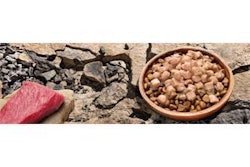What’s coming in 2015, especially for petfood? With the end of the year in sight, experts and prognosticators are starting to release predictions for 2015: the ever popular top 10 (fill in the blank). Some of these lists do provide insight (or, in some cases, validation) for our industry, such as one from Innova Market Insights on the top 10 human food trends they see coming or continuing in the new year.
Presented during a recent webinar, Innova’s top 10 list keyed on clean labels, which the market research firm said is now transforming into clear labels—in other words, greater transparency to consumers. While this trend has been in play for a few years now, Lu Ann Williams, director of innovation for Innova, said it is moving from label claims such as natural, no additives or preservatives, no artificial flavors or colors (which Williams added have become overused) to information on the source of ingredients, nutrition facts and labeling about allergens—all on the front of the pack.
This is in response to consumers’ increasing interest in and concern about where their food is coming from and what’s in it (and what’s not in it). In fact, a poll taken during the webinar showed that 42% of respondents chose “from clean to clear label” as the trend that would most impact their businesses in 2015. We know pet owners have the same concerns about their pets’ food, and we’re already seeing this type of labeling and package claims on petfood products, which we can expect to continue.
Another trend on Innova’s top 10 list, “snacks rise to the occasion”—or, as Williams referred to it, the “snackification of everything”—is also appearing in petfood. Eric J. Pierce, director of strategy and insights for New Hope Natural Media, gave examples of snack products for pets during Petfood Industry’s recent webinar on natural petfood products. While Williams highlighted breakfast items for humans that are now packaged and presented similarly to snack foods, Pierce gave examples such as jerky-type treats or pet treats that resemble cookies.
In discussing a “more in store for protein” trend, Williams highlighted not only the growing prevalence of label claims about the sourcing of proteins but also the new types of protein showing up in food products. For example, algae, such as spirulina; in our industry, we see microalgae starting to be used as an ingredient to supply omega-3 fatty acids to petfoods. Williams also mentioned recent buzz (sorry, pun intended) about insects as an alternate protein source, noting that she believes it will show up in petfood or animal feed first, before possibly being used in human foods.
Finally, among Innova’s top 10 list, the other trend of note for our industry was “a fresh look at frozen.” Williams commented that historically, a rise in interest and sales of frozen foods seems to have jibed with economic downtimes because of perceived value for consumers. Now, however, food companies are promoting the freshness of frozen products (with claims such as “fresh from the sea” or “fresh from the field” before freezing) as well as convenience, “portioning made easy” and reduced waste (vs. fresh produce, meat or seafood).
Williams referred to this as a “sleepy trend with huge potential,” which seems to be mirrored in our industry by the continuing and rapid growth of frozen and refrigerated raw petfoods. According to recent data from GfK, sales of this category have continued to grow at about 17% to 20% annually over the last four years. From January to August of this year alone, the category has increased by 17%. “And, despite the added burden of installing refrigerators and freezers and culling expired items, the percentage of outlets—neighborhood pet shops and pet superstores—carrying refrigerated/frozen food has grown from 65% in 2011 to 75% in 2014,” GfK says.
Freeze-dried petfood products are rising even faster, by the way, showing 43.8% sales growth from January to August 2014.

















